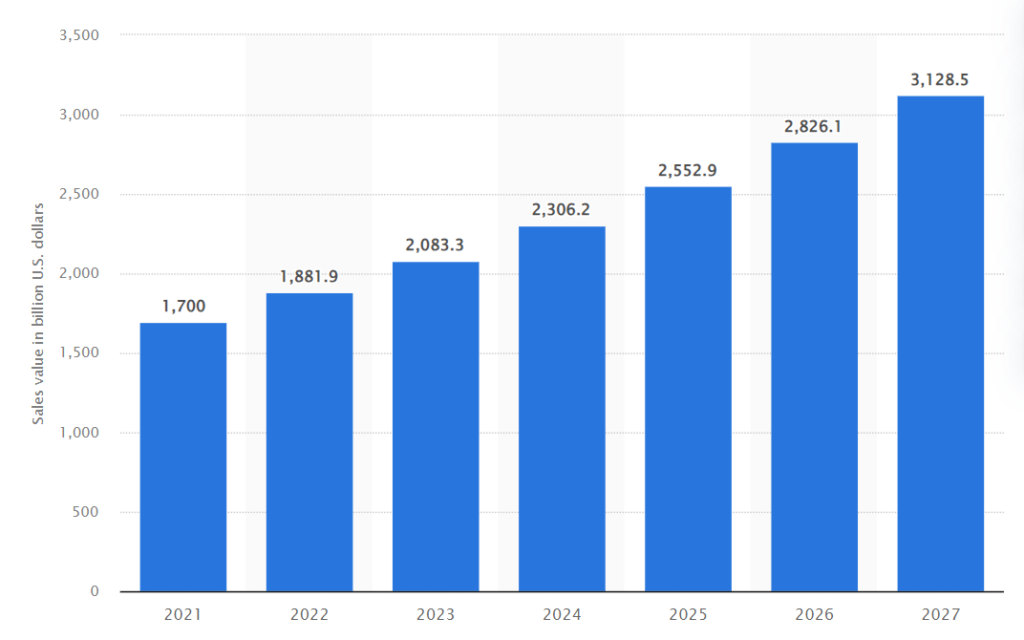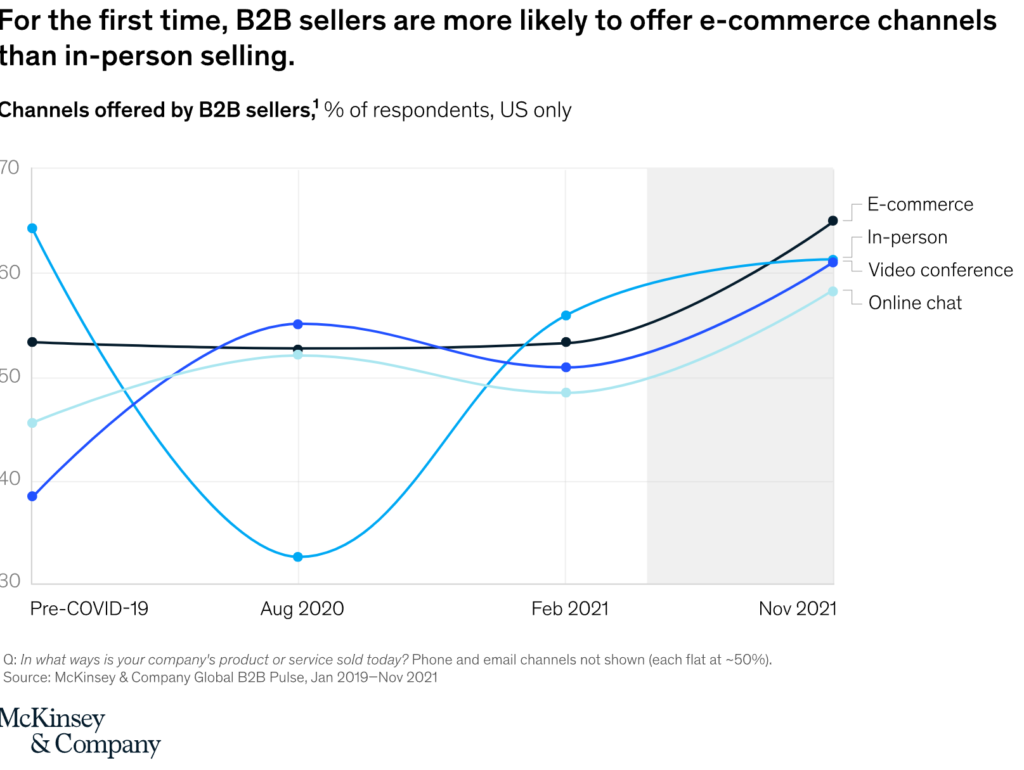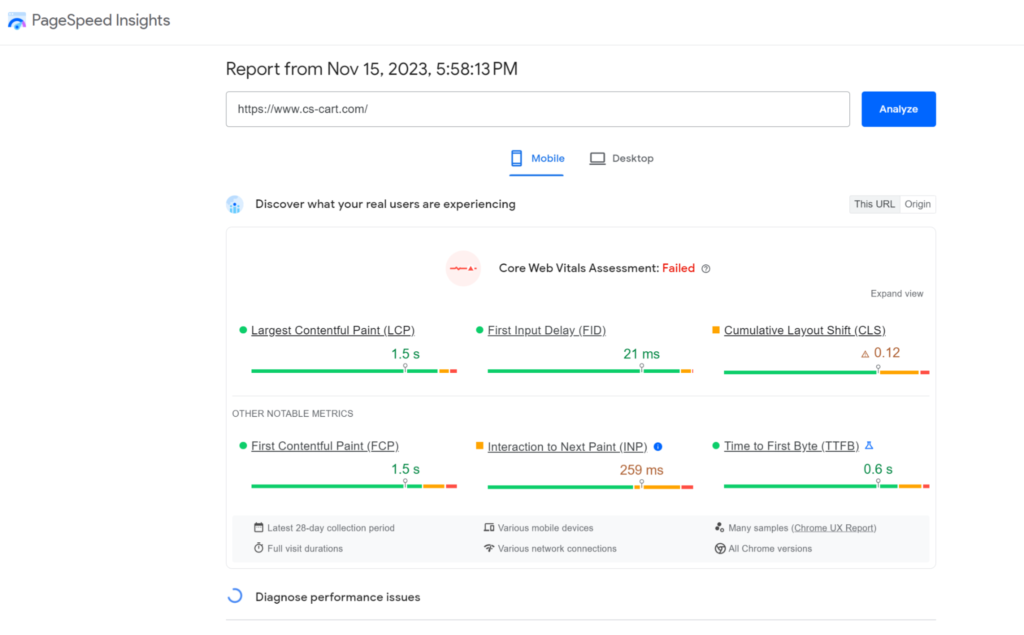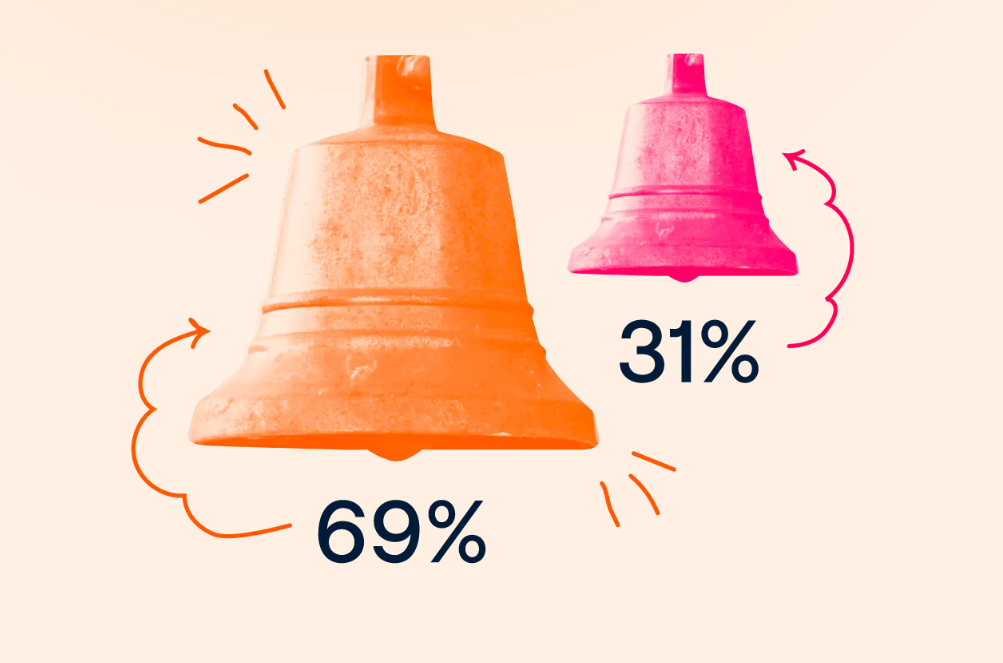How to Level Up B2B Ecommerce Customer Experience
Introduction
The B2B ecommerce customer experience is on the rise. Statista reports that 17% percent of all B2B sales are expected to be generated digitally in 2023.
Why is this? Well, B2C industries have vastly shifted to a digital customer experience. Businesses have grown accustomed to digital conveniences. Many are now asking, why can’t I have a similar experience in B2B purchasing?
The answer is that they can. Many businesses are providing seamless digital experiences for B2B customers.
What’s Different About B2B Ecommerce?
Most people are familiar with B2C and DTC (direct-to-consumer) ecommerce. In both transactions, the consumer purchases from either the manufacturer or distributor. Every day, you visit ecommerce websites, add items to your shopping cart, and purchase items.
The difference with B2B ecommerce is that there is no individual. One business entity is buying a product or service from another. In these cases, purchases are typically much bigger in quantity and/ or cost. Most of the time, the purchasers will be reselling the item to the general consumer.
Types of B2B eCommerce

Image Sourced from Statista
B2B sales in the United States are projected to increase by more than 50% from 2023 to 2027. Where exactly are all those transactions coming from?
Well, there are several marketplace types for B2B ecommerce.
B2B to B2C
Perhaps the most obvious involves a B2B seller and a B2B purchaser. The purchasing company then sells the products directly to consumers. This model is also known as B2B2C. This can involve an ecommerce seller that buys products in bulk.
Wholesale
Wholesales help make the ecommerce world go round. They often act as middle parties to facilitate consumer markets. They acquire raw materials, supplies, or products and sell them to businesses in bulk.
Manufacturing
Manufacturers are the ones working with raw materials. They sell their products to suppliers, wholesalers, or even other manufacturers. Manufacturer marketplaces work well with ecommerce because technology helps avoid delays and bottlenecks.
B2B ecommerce platforms automate processes like reorders to keep up with demand. Additionally, they get access to real-time information on stock levels and order fulfillment.
Distributor
Distributors will store items and take care of order fulfillment for other parties. One distributor may partner with many businesses in manufacturing or other industries. B2B ecommerce helps these businesses streamline supply chain logistics and create greater transparency.
The B2B Ecommerce Customer Experience
The B2C and B2B customer experiences can be vastly different. Modern technology has streamlined B2C with mobile apps and electronic payment processing. Additionally, the B2C shopping experience has become highly personalized to meet consumer expectations.
Traditionally, B2B has been resistant to digital adoptions. The buying cycle moves at a relatively slow pace. Stock lists must be obtained and pricing figured out. Orders must be placed, approved, and then fulfilled.

Image Sourced from McKinsey
Despite the early inertia of technology, the B2B marketplace is trending digital. A report from McKinsey found that 65% of B2B sellers offer digital shopping channels through ecommerce platforms.
These channels include emerging technologies like conversational commerce, which enable businesses to engage customers in real-time conversations and provide a more personalized shopping experience.
When it comes to customer shopping and support experience, there’s no reason B2B and B2C can’t mirror each other. For instance, a call queue offers customers a convenient way to avoid long waits for customer support. This service tactic works equally well for B2B and B2C customers.
How to Build a Better B2B Ecommerce Customer Experience
1. Create Intuitive Website
Build an intuitive ecommerce customer experience on all of your shopping channels. This starts with your website. Since a lot of money is at stake, businesses conduct plenty of research before making a purchase. Make it easy for them to find out what you’re all about with informative landing pages.
Make it obvious how to create an account and where to seek pricing information. If you also sell DTC, use an ecommerce platform that lets you build a customized portal for B2B shoppers. That way, you can provide a dedicated shopping channel to meet business needs.
If you operate in more than one region, you want to localize your website. Use an ecommerce tool that automates translations and accessibility for each market. You can take this up a notch by registering a separate domain for B2B customers.
For example, you can use .com for your brand and get a .ai registration for your B2B portal if you deal with tech businesses.
2. Personalize the Ecommerce Experience
Personalization is a vital way to make ecommerce customers feel more valuable. A B2B portal or customer account platform is the first step towards attaining personalization. This gives your customers a place to track order history, billing, and other important information. However, personalization goes a lot further than that.
Just look at an ecommerce behemoth like Amazon. Site visitors are inundated with product recommendations, notifications, and reminders. Use an ecommerce tool that analyzes customer order history and makes relevant recommendations.
A big difference between B2B and B2C is pricing. In the B2B marketplaces, pricing is negotiable. Ensure your customers have access to their bespoke pricing and product catalogs.
Moreover, to enhance personalization, consider implementing a targeted marketing strategy that caters to your B2B customers’ specific needs and preferences. This can be particularly effective in aligning your marketing efforts with the customized experience you provide.
3. Go Mobile
Global smartphone sales push upwards of 1.5 billion units annually. The penetration rate of smartphones in the US is 81.6%. Additionally, businesses are increasingly operating with remote and flexible work teams. Mobile ecommerce is becoming the norm.
Not every manager, buyer, or decision maker is working from their computer at their desk. The people placing orders and paying transactions are on the move. Meet them where they are by optimizing your ecommerce website for mobile.

Image Sourced from PageSpeed Insight
When designing the shopping experience, think vertically and think about screen size. Of course, you want minimal code with fast page loading. There’s no point in showing a huge product list if the thumbnails are too small to see or click! Use a tool like PageSpeed Insights to find out what needs to be improved.
Optimization is only one side of the mobile B2B coin. You can level up the experience for mobile users by developing an ecommerce mobile app. Smartphone apps offer a streamlined experience for creating orders, reordering, and multi-carrier shipment tracking.
4. Build an Omnichannel Ecommerce Customer Experience

Image Sourced from McKinsey
The number of channels B2B customers use is on the rise. A 2021 report found that B2B shoppers went from using 5 channels to 10 shopping channels. A website and mobile app are obvious, but you can offer plenty of other channels such as web chat, video conferencing, and phone calls.
Effective lead nurturing through these channels can be crucial for building strong B2B relationships. Maintaining engagement and providing relevant content to leads at different touchpoints can significantly impact their decision-making process.
The key is to not make a mess of things. In other words, only offer as many channels as you can keep connected. You don’t want online customers to have to recreate an order over the phone if they already made one in the mobile app.A customer relationship management (CRM) platform, such as ecommerce CRM software, is crucial to managing B2B client data.
Combine this tool with a hosted call center solution and take customer experiences to the next level. Your representatives can manage live chat, email, and phone calls all from the same place.
Users can start an order on one channel and finish it later from a different one.
Painless Payment Options
Payment is often a bottleneck within the B2B process. Companies are often placing large orders with associated costs. B2C merchants have streamlined customer payment with online transactions and multiple payment methods. Some of these involve buying on credit with Paypal or “Buy Now, Pay Later” with Klarna.
You may not be able to offer the same payment methods. However, take inspiration and build a process that allows your best customers to pay at a later time. Orders will be processed and fulfilled quicker, improving the customer experience.
Of course, it’s worth getting a fraud risk assessment done before implementing online payment methods.
6. Offer Frequent Updates

Image sourced from Front
Research from Front found that 69% of B2B customers prefer frequent updates. A user-centric website and mobile app are great ways to let clients customize things like email notifications and mobile phone alerts.
You also want to provide frequent updates for order processing and fulfillment. Give your customers access to live order tracking or courier reference numbers. This lets those who want constant updates get what they need. However, those businesses that prefer less communication can also tailor update frequency.
If your business uses a VoIP phone service, you can configure updates and notifications to be sent as SMS text messages. (here are even tools that can process payment this way).
Streamline High-Volume Ordering
Many of your best ecommerce customers will need to reorder the same things over and over again. You may get away with a more lengthy initial ordering process. Once the relationship matures, give your repeat customers a better experience.
A simple “reorder” button on your web portal or mobile app will get the job done. This method will save lots of time for plenty of B2B transactions. However, not everyone needs to reorder.
Another way to streamline orders in bulk is to use a tool that integrates CSV scanning. This lets businesses use an order spreadsheet to modify quantities of what they need. They simply upload the spreadsheet and voila!
Your B2B Customers Deserve a Better Ecommerce Customer Experience
B2B customers aren’t that different from individual consumers. They want value but they also want a speedy and convenient shopping experience. Enhancing the ecommerce customer experience will differentiate your business in the B2B marketplace.
Yan Anderson is the Head of Content Marketing at CS-Cart with over 10 years of experience in the eCommerce industry. He's passionate about explaining complicated things in simple terms. Yan has expertise in building, running and growing eCommerce marketplaces. He loves to educate people about best practices, new technologies, and trends in the global eCommerce industry.

